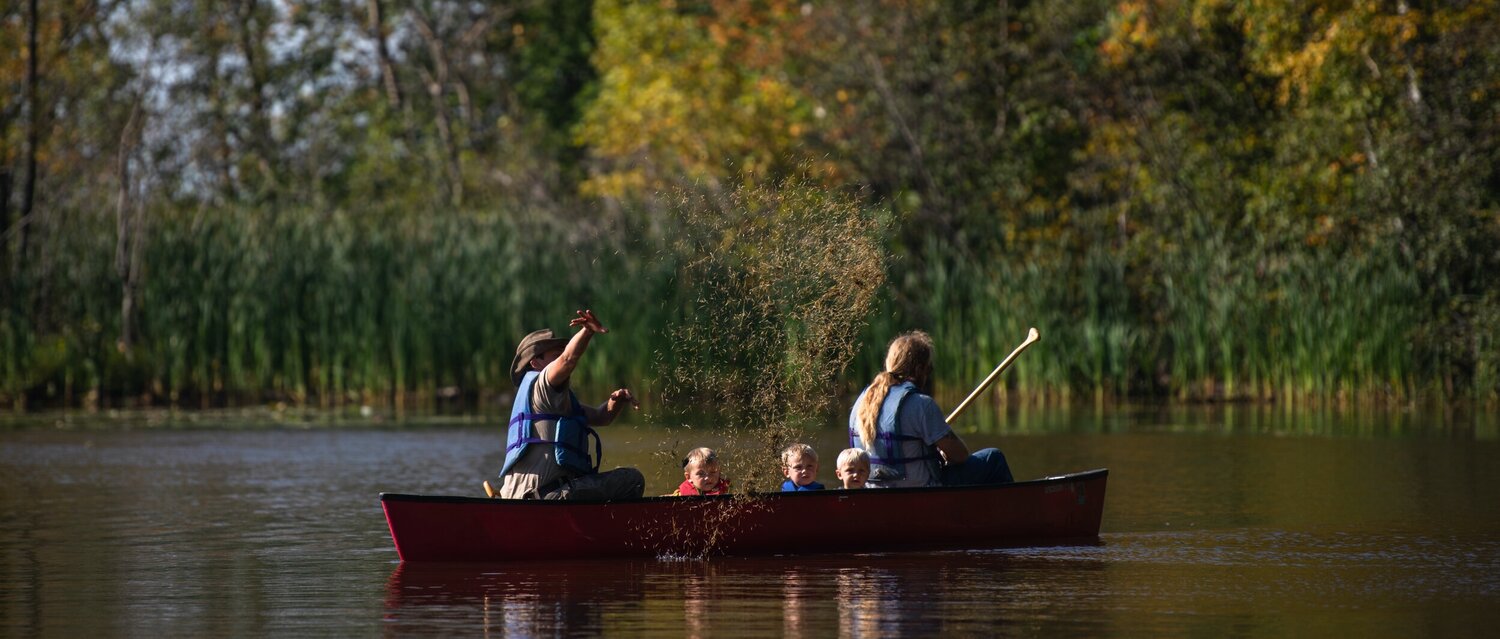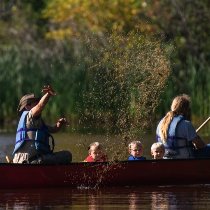 Ingredients:
Ingredients:
1 1/2 C cooked wild rice (See below)
1 small onion, chopped, about 1 C
1 C roasted mushrooms
1 red or green pepper, diced
1 small green apple, diced
1 ½ C salad greens of your choice
1 C roasted nuts or seeds (walnuts, pecans, sunflower seeds)
Salt and Pepper to taste
Berry Maple Dressing (See below) or your favorite vinaigrette
Directions:
Toss all ingredients together in a serving bowl and serve.
Cooked Wild Rice:
Heid E. Erdrich recommends: 1 C rinsed wild rice in 2 C water or stock brought to a boil in a heavy medium size pot with a lid. Turn down the heat to a simmer for 15 – 20 minutes. Extra cooked wild rice freezes and thaws well in an airtight container or freezer bag four soup, pilaf and other recipes!
Dressing Ingredients:
2 T raspberry jam or another favorite flavor
1 T maple syrup
1/3 C raspberry vinegar. You may substitute other fruit vinegar (cider) or balsamic
¼ tsp salt
¼ tsp pepper
½ tsp dried tarragon
1 tsp minced chives, optional
1C oil (sunflower, extra virgin olive or oil of your choice)
Dressing Directions: Whisk together jam, syrup, seasonings. Continue to whisk and add the oil until completely mixed. Taste to adjust seasonings. Use this to dress this salad or as a marinade.
About the author: Heid E. Erdrich is author of a cookbook called Original Local: Indigenous foods, stories, and recipes from the Upper Midwest. She gathered sketches, photos, recipes and stories from many family members. She group up in the Red River Valley in NW Minnesota and her foods represent tribes from throughout the Upper Midwest. Her book is published by MN Historical Society Press and is a gem!
If you would like to be notified when we share new recipes, be sure to scroll to the bottom, provide your email address, check the box confirming you are not a robot, click on a few photos to prove it and click subscribe! You will then receive an email after each new post. Remember, we're always looking for new recipes, so keep sending them to ecopact@fspa.org!
Story: This fall Wild Rice Salad is refreshing and full of colorful nutrients. In this Season of Creation, Native people and have much to teach about the sacredness of food, such as their beloved sister Wild Rice, aka manoomin or good berry. As the ricing season comes to an end, we can reflect on how Wisconsin’s unique wild rice beds depend on WATER. These beds in lakes and rivers are being adversely affected by climate change and pollution. Wild rice is designed for clean water and a cold, northern climate. he mild winters, heavy spring rains and warmer water associated with climate change, threaten her existence.
The St. Louis River in both Wisconsin and Minnesota and its Estuary near the popular Duluth/Superior area has been an environmental Area Of Concern (AOC) since 1987. Before modern environmental laws were in place, pollution created much damage. Area citizens, government agencies, tribes, non-profits, universities and others formed the St. Louis River Alliance. Their goal is to restore 275 self-sustaining acres of wild rice beds in this AOC, along with restoration of wildlife habitat, recreation areas, clean water and more.
A short video entitled: Restoring Wild Rice in the St. Louis River Estuary describes the sacred nature of wild rice to the Ojibwe and the work of St. Louis River Alliance partners to help the river and wild rice recover. For if the wild rice goes away, so do her people.
We can't ignore that another huge task we humans face is to hold back on rising water temperatures that also threaten wild rice, fish, habitat, weather patterns and people on the earth, our Common Home.
To learn more about Indigenous Affairs in Wisconsin, follow Frank Vaisvilas, Indigenous affairs reporter for USA TODAY NETWORK-Wisconsin based at the Milwaukee Journal Sentinel. His work raises awareness!
Also, Monday, October 9 is Indigenous People's Day. Check out the activities going on in La Crosse and many other communities on that day!





Post a Comment